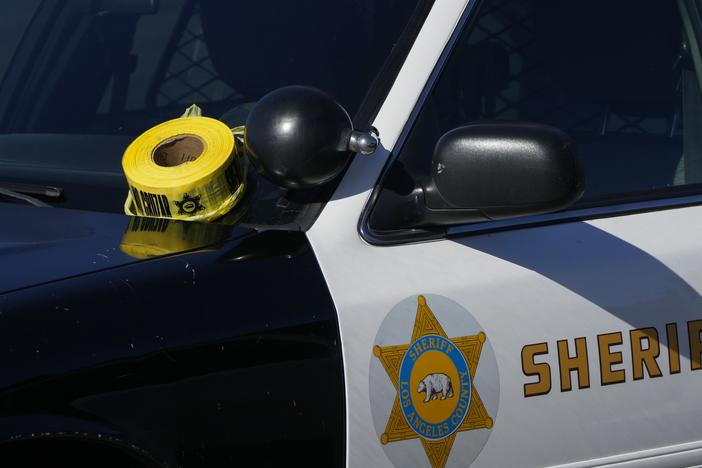WATCH LIVE | East Coweta At Sandy Creek, Kickoff At 8 P.M. - And Buford At Milton, Kickoff At 7:30 P.M.
Section Branding
Header Content
U.S. presses the ‘reset button' on technology that lets cars talk to each other
Primary Content
WASHINGTON — Safety advocates have been touting the potential of technology that allows vehicles to communicate wirelessly for years. So far, the rollout has been slow and uneven.
Now the U.S. Department of Transportation is releasing a roadmap it hopes will speed up deployment of that technology — and save thousands of lives in the process.
“This is proven technology that works,” Shailen Bhatt, head of the Federal Highway Administration, said at an event Friday to mark the release of the deployment plan for vehicle-to-everything, or V2X, technology across U.S. roads and highways.
V2X allows cars and trucks to exchange location information with each other, and potentially cyclists and pedestrians, as well as with the roadway infrastructure itself. Users could send and receive frequent messages to and from each other, continuously sharing information about speed, position, and road conditions — even in situations with poor visibility, including around corners or in dense fog or heavy rain.
“The roadway system is safer when all the vehicles are connected, and all the road users are connected,” Bhatt said in an interview.
Safety advocates say V2X technology could help prevent thousands of crashes a year, and also mitigate damage by lowering the speed of impact when crashes do occur. They hope that help will bring down the number of traffic fatalities in the U.S., which has climbed to more than 40,000 per year.
“The plan is a vital first step towards realizing the full life-saving potential of this technology,” said Jennifer Homendy, the chair of the National Transportation Safety Board.
Homendy joined the press event virtually from Swanton, Ohio, where the NTSB is investigating a series of crashes involving multiple trucks on the Ohio Turnpike this week. V2X technology could potentially have prevented the crashes that killed four people and injured several more, she said.
“V2X can help reverse the devastating public health crisis on our nation’s roads,” Homendy said, “and fundamentally transform our nation’s transportation landscape.”
Despite enthusiasm from safety advocates and federal regulators, the technology has faced a bumpy rollout. During the Obama administration, the National Highway Traffic Safety Administration proposed making the technology mandatory on cars and light trucks. But the agency later dropped that idea during the Trump administration.
The deployment of V2X has been “hampered by regulatory uncertainty,” said John Bozzella, president and CEO of the Alliance for Automotive Innovation, a trade group that represents automakers.
But he’s optimistic that the new plan will help.
“This is the reset button,” Bozzella said at Friday’s announcement. “This deployment plan is a big deal. It is a crucial piece of this V2X puzzle.”
The plan lays out some goals and targets for the new technology. In the short-term, the plan aims to have V2X infrastructure in place on 20% of the National Highway System by 2028, and for 25% of the nation's largest metro areas to have V2X enabled at signalized intersections.
V2X technology still faces some daunting questions, including how to pay for the rollout of critical infrastructure and how to protect connected vehicles from cyberattack.
But safety advocates say it’s past time to find the answers.
“We know how to create safer cars using the incredible technology that has transformed life in America,” said Dan Langenkamp, whose wife, U.S. diplomat Sarah Langenkamp, was killed by a flatbed truck while riding her bicycle in Maryland almost two years ago.
“How can we as government officials, as manufacturers, and just as Americans, not push this technology forward as fast as we possibly can,” Langenkamp said, “knowing that we have the power to rescue ourselves from this disaster, this crisis on our roads.”
Bottom Content




